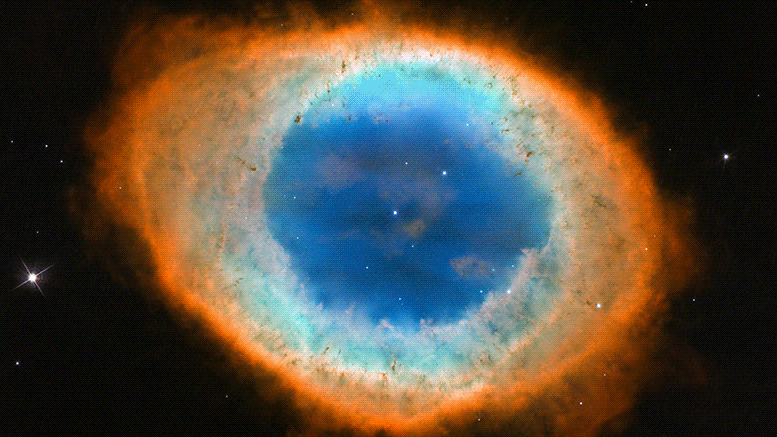
Los observadores del cielo en junio querrán ver los planetas Saturno, Marte, Júpiter, Venus, Hércules Cluster y la constelación de Lyra.
¿Qué hay para junio? La desintegración planetaria, un síntoma importante de un cúmulo estelar conocido y la constelación de Lyra.
Los aspectos más destacados de Skywatching para junio de 2022 incluyen la recolección de cuatro planetas a simple vista ([{» attribute=»»>Saturn, Mars, Jupiter, and Venus) in the morning sky. Check these out, before they break up. There is also the Hercules Cluster, one of the most well-known globular clusters, which you’ll be able to see with just binoculars if you don’t have access to a telescope. Enjoy a nice view of the constellation Lyra, which is easy to locate by looking for Vega, one of the brightest stars in the sky.
La reunión a simple vista de cuatro planetas que hemos estado disfrutando en el cielo de la mañana durante los últimos meses, incluidos varios emparejamientos cercanos, comenzó a desmoronarse. Durante los próximos meses, Saturno, Marte, Júpiter y Venus aparecerán cada vez más dispersos en el cielo matutino, tanto que Venus y Saturno saldrán como objetos matutinos para la mayoría de los observadores en septiembre.
Busque esta órbita planetaria cada vez más divergente en junio y observe cómo la luna creciente salta a la alineación en la mañana del 23.

Los planetas continúan dando sus espectáculos por las mañanas antes del amanecer de junio, con la Luna uniéndose a la alineación el día 23. Crédito: NASA/JPL-Caltech
Junio es un excelente momento para ver uno de los más famosos grupos de estrellas del futbol – M13, también conocido como grupo Hércules. Los cúmulos globulares son cúmulos globulares de estrellas, muy apretados en sus centros. M13 en sí contiene cientos de miles de estrellas.
Los cúmulos globulares también son muy antiguos. Se cree que la edad de las estrellas en M13 es de unos 12 mil millones de años, que se acerca a la edad del universo mismo. nuestro hogar galáctico,[{» attribute=»»>Milky Way, is known to have about 150 globular clusters. They orbit outside the galaxy’s disk, traveling tens of thousands of light-years above and below its spiral arms and most of its stars.

Find M13 in Hercules by first locating the stars that form the Keystone, about a third of the way between bright stars Vega and Arcturus. Credit: NASA/JPL-Caltech
Now, the Hercules Cluster is best observed with a telescope, and larger telescopes will allow you to see more of the cluster’s stars. But you can also find it with a pair of binoculars, where it’ll look like a hazy little spot.
Find M13 in the constellation Hercules, which is high in the east in the first couple of hours after dark in June.

This image, taken by the Advanced Camera for Surveys on the Hubble Space Telescope, shows the core of the great globular cluster Messier 13 and provides an extraordinarily clear view of the hundreds of thousands of stars in the cluster, one of the brightest and best known in the sky. Just 25,000 light-years away and about 145 light-years in diameter, Messier 13 has drawn the eye since its discovery by Edmund Halley, the noted British astronomer, in 1714. The cluster lies in the constellation of Hercules and is so bright that under the right conditions it is even visible to the unaided eye. Credit: ESA/Hubble and NASA
First look for the bright stars Vega and Arcturus.
Then find the four stars that comprise “the Keystone,” which is the pattern making up the central part of Hercules.
You’ll find M13 about a third of the way between the two stars on the western, or leading, side of the Keystone.
So check out the Great Globular Cluster in Hercules, M13, in June, and find yourself staring at an ancient gathering of stars that soars high above the Milky Way.

Lyra is easy to locate in the sky, thanks to the brightness of Vega, which is part of the Summer Triangle asterism. Credit: NASA/JPL-Caltech
Finally in June, a quick introduction to one of the smaller constellations that’s home to one of the brightest stars.
That’s the constellation Lyra.
It represents a lyre, or harp, played by the musician Orpheus in Greek mythology.
In Arab cultures, as well as ancient Egypt and India, Lyra was seen as an eagle.
And the Inca of South America saw it as a llama.
Find Lyra by looking for Vega, which is the westernmost of the three bright stars in the Summer Triangle.

This image shows the dramatic shape and color of the Ring Nebula, otherwise known as Messier 57. From Earth’s perspective, the nebula looks like a simple elliptical shape with a shaggy boundary. However, observations combining existing ground-based data with new NASA/ESA Hubble Space Telescope data show that the nebula is shaped like a distorted doughnut. This doughnut has a rugby-ball-shaped region of lower-density material slotted into its central “gap,” stretching towards and away from us. It is located about 2,500 light years from Earth in the Lyra Constellation. Credit: NASA, ESA, and C. Robert O’Dell (Vanderbilt University)
In the Northern Hemisphere, you’ll find it halfway up the eastern sky in the first couple of hours after dark in June.
Vega is by far the brightest star in Lyra.
It’s the fifth brightest star in the sky and the second brightest in the Northern Hemisphere, after Sirius.
A pair of binoculars will help you see the others stars in Lyra, which form a sort of parallelogram hanging beneath it.
It’s sometimes described as looking a bit like a diamond ring, with Vega as the diamond.
And that’s not the only ring in Lyra. It’s also home to the famous Ring Nebula, where a star has blown off most of its outer layers, leaving behind a remnant star known as a white dwarf.
So let the bright star Vega lead you to Lyra, the harp constellation, in the June sky. And if you see it as an eagle, or a diamond ring, or a llama, well that’s perfectly okay too…







